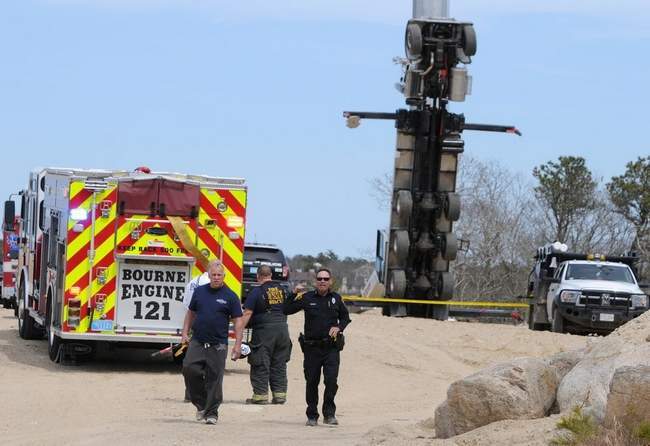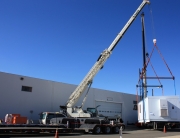Unfortunate & Preventable Crane Accident – OSHA fines company $168,000
Two young men die in what, unfortunately, may have been “preventable.” OSHA has fined Mass Bay Electrical Corp for potentially not providing proper training to its employees. The incident resulted in the death of two of its workers both aged 34, who were working at the end of a crane’s boom when the crane tipped over.
Crane accidents are often related to the absence of proper crane safety mechanisms.
The Occupational Safety and Health Administration indicated the company may be responsible for the willful violation of workplace safety standards. That’s not the only area where Mass Bay Electrical Corp. has to worry about though. OSHA has also stated that the company did not use cranes in the proper way. As a result, Mass Bay has been fined $168,000 and has been given a time frame of 15 days to respond to OSHA’s citations.
The need for crane safety mechanisms is more obvious than ever in this incident. “These deaths were preventable” states OSHA. Companies need to install crane safety mechanisms to ensure crane safety and the safety of workers and crane operators. However, Judy Songdahl, the spokeswoman for Mass Bay has stated that the company will follow up with OSHA within the next fifteen days.
OSHA, during its investigations, found that the crane operators were not able to work with the crane properly, something that stated that they weren’t trained for crane operation. The supervisors apparently did not follow the procedures involved in setting up and operating the crane even though the instruction manual was in the crane itself. Terming the deaths as preventable, Brenda Gordon, OSHA’s director for Boston and Southeastern Massachusetts, said that there was a definite absence of use of readily available resources that cause the death of the two workmen.
Using crane warning systems
It should be remembered that crane-warning systems are easily available these days and can help prevent such accidents. From warning the crane operator in case of excess load to ensuring that two cranes do not collide with one another, crane-warning systems solve a number of safety purposes.
The PAT Hirschmann LWG Crane Cable Reel, for instance, is installed on the boom of a crane and has a number of sensors including the angle sensor and length sensor. It can help prevent two-blocks and determines the telescopic boom length as well. The angle sensor, mounted inside the cable reel housing, determines the angle of the boom, and as a part of a Load Moment Indicator system can stop the loads from tipping over. Following the standard safety procedures and using proper crane safety warning systems is absolutely integral to preventing crane accidents today.
References:
http://www.bostonglobe.com/metro/2014/09/24/osha-fines-company-for-cape-cod-crane-accident/iOwn2ITNfXAhMZIs9IwbKO/story.html
http://marshfield.wickedlocal.com/article/20140925/NEWS/140927337









